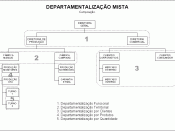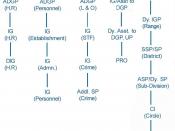A manager needs to understand the interdependency of departments, internal partnerships, and the influence of power and politics to effectively manage across the organization. Effective managers use various political tactics to increase their power within the organization to coordinate and support the work of their peers and subordinates to meet company objectives. Managers regularly acquire and use power. Power-oriented behavior has an impact on managerial career progress, on job performance, on organizational effectiveness, and on the personal lives of employees (Obholzer, 1995). It involves the combined topics of power, influence, authority, and organizational politics. When running an organization, all these factors should be taken into consideration.
In managing an organization effectively there are critical partnerships and alliances that a new manager must maintain in that organization. Companies are increasingly looking at strategic partnerships, alliances and joint ventures as avenues to enter new markets, establish new business offerings, across new distribution channels or pursue new areas of growth (Schwartz, 1999).
Corporate alliances can help mitigate risks of new initiatives and they can also leverage skills and resources provided by others. Strategic partnerships may take a variety of forms and may involve product/service development, sales, marketing and delivery. These strategic partnerships can become significant competitive differentiators by increasing times to market in developing product/services, accessing new clients in current or new geographies and improving internal operations. In this simulation, I first used the input of upper level management before making a decision and combining their input with my ideas to make a logical decision that will help the company expand.
The formal structure is the organization's plan for "executing its processes". In other words the formal structure defines how it will apply resources to carry out what it needs to do (Egan, 1994). The formal structure also reflects the authority and responsibility...


